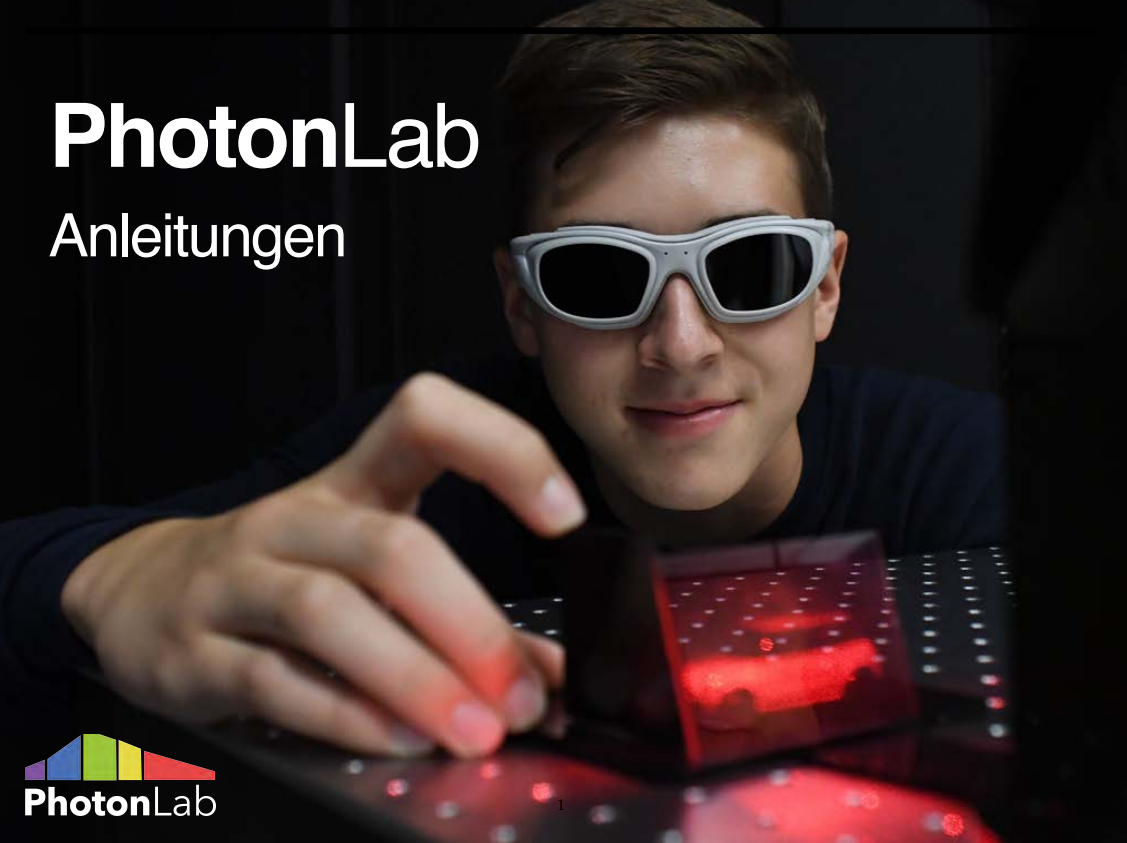
INSTRUCTIONS PhotonLab
Before you start! — We recommend that you download the instructions for all experiments currently available in PhotonLab!
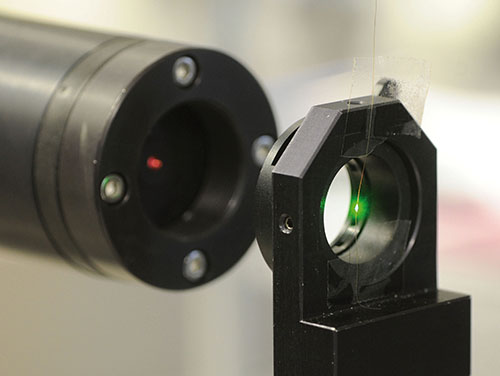
Diffraction patterns
How can we measure the thickness of a hair without a microscope? — The Photonlab is a place where students regularly tear their hair out. Of course, they only do this to see who has the thickest hair. If you aim a laser on an individual hair, you can see a diffraction pattern projected on screen, where you can measure the hair’s thickness. You can see which hair color is winning the hair-thickness race on our hair honor roll.
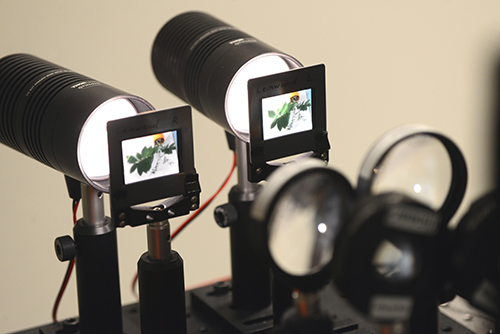
3D vision
Building our own 3D cinema — Many movies are now shot in 3D. It is becoming standard that you receive not only a ticket, but also a pair of 3D glasses at the box office. But how are 3D effects produced, anyway? Using a simple structure, once can recreate this effect in the lab by taking advantage of different polarizations of light waves.
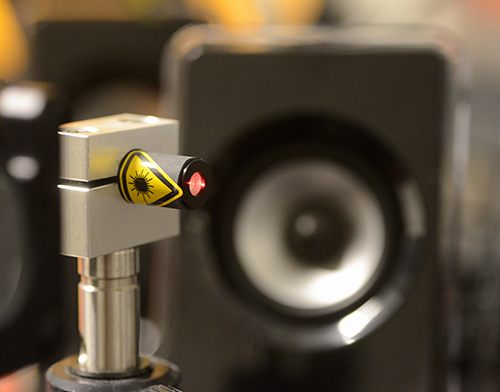
Transmitting data
There’s music in the laser! — Over the internet, screeds of data can be sent around the globe within a very short time. To experience how data is sent by means of light, students can transmit music from a smartphone via laser. When the laser beam hits the detector, the party gets started in the student lab!

INFRARED
Making invisible infrared radiation visible — The Earth's atmosphere consists mainly of nitrogen and oxygen. Greenhouse gases such as carbon dioxide and methane are only present in trace amounts, but still have a major impact! So what happens to the temperature of the atmosphere when humans release large amounts of CO2 into the atmosphere by burning fossil fuels? Pupils can explore this with the thermal imaging camera and understand the significance of the Earth's radiation budget and climate change.

Holography
Help me, Obi-Wan! — Unlike a normal image, i.e. a two-dimensional depiction, a hologram also uses the third dimension. A hologram is therefore a complete representation of the object, without any loss of information. While this technology is constantly featured in sci-fi films such as Star Wars, we tend to use normal images or videos in our everyday lives. But how does a hologram actually work? Find out when you visit PhotonLab!
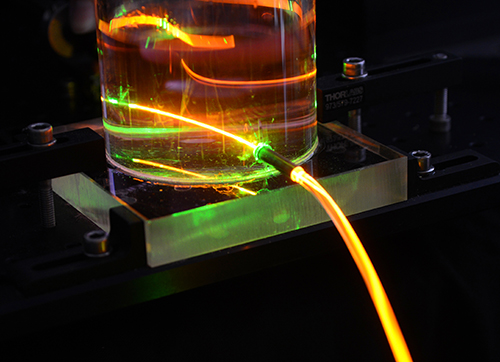
Water as a conductor
We “lock up” light! — How is it possible that we can send light around the world using glass fibers? Why does light allow itself to be “imprisoned” in these fibers, and travel a curving path? In the student lab, we can illustrate this effect by capturing laser light in a jet of water and observing total reflection at work. Without any specialist tools, it can be understood that light does not always take the straight path.

TASTY IN THE LIGHT
The experiment on color vision — The experiment "Tasty in the light" offers an excellent illustration of the connection between physics and physiology: color vision. Optical and physiological parameters are explained here and linked in an interdisciplinary way with biology, economics, philosophy and the pupils' everyday lives with the help of experiments they carry out themselves.
Mirage
How we can fool the senses! — Normally, light moves in a straight line. But under certain circumstances, light can travel in a curve, even without being encased in a glass fiber. Using a specially prepared sugar solution we can make a laser beam bend, and therefore understand why oases, which are not actually there, can sometimes appear in the desert.
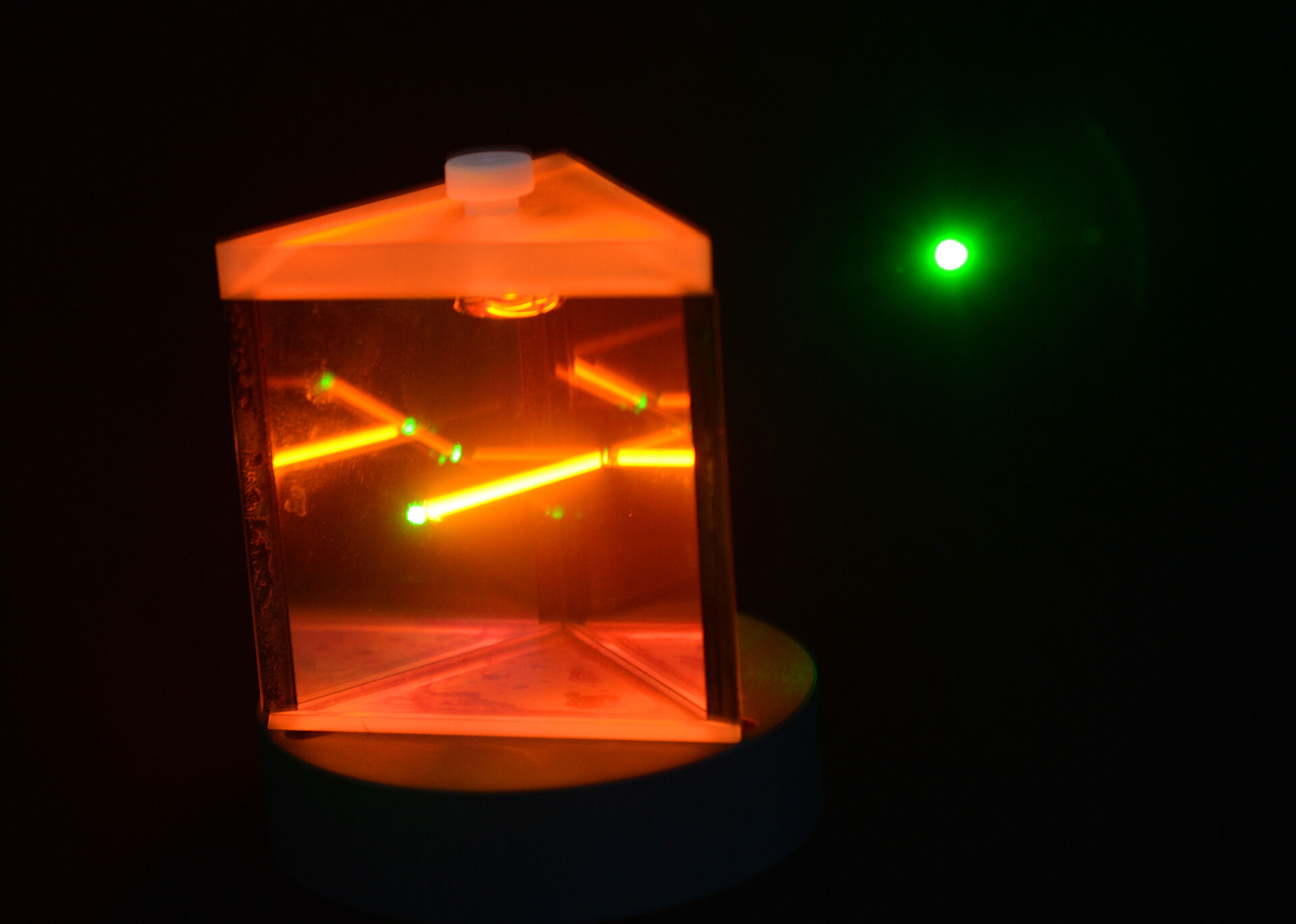
Cola: the calorie bomb
How much sugar is hidden in our drinks? — We all know that candy contains a lot of sugar. But what is often overlooked is the unexpectedly high amount of sugar in our soft drinks. With the aid of hollow prisms placed in various liquids, we can measure how many sugar cubes are actually dissolved in a bottle of cola. The result is surprising!

Secret screen
Liquid crystals in screens — Apart from old computer screens, many technical devices use so-called LCD (liquid crystal display) monitors. The crystals are optically active and therefore change the polarisation of light. A polarisation filter on the screen creates the image we are familiar with. However, if the film is removed, the display is completely white.

Mirascope
Flying spiders — When so-called parabolic mirrors are arranged in a certain way, an interesting phenomenon occurs: an image of an object that is actually located elsewhere appears in the air. If you try to catch the seemingly flying spider, the optical illusion is revealed. You can simply reach through the image! Fun fact: this phenomenon was discovered by chance when some dust could not be wiped away while cleaning a mirror warehouse.
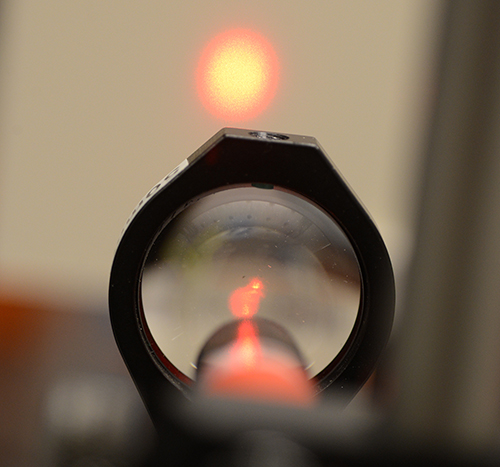
Laser speckles
Am I farsighted? — Lasers can be used to fix defective vision. But in our laboratory, it can also be used to reveal if you are shortsighted or farsighted. And all without needing to point a laser at your eyes: simply by analyzing slight movements of your head while you focus on a laser spot on a screen.

Geometric optics
Why is the cat upside down? — In geometric optics, light is interpreted as a beam. Objects such as lenses, mirrors or apertures are used to influence the path of the light beam. The geometric properties of the lenses, especially the curvature of the glass, are used to understand the change in the path of the beam. Geometric optics can also be used to explain how images are formed in our eyes.
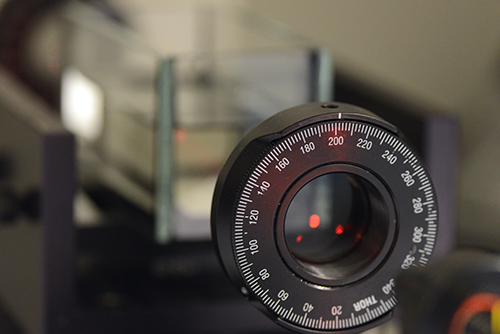
Polarimeter
Why soda manufacturers are interested in polarization — The polarisation of light indicates the direction in which the electric field of the light wave oscillates. And as long as the light does not pass through special materials or filters, this direction does not change. However, if light passes through a sugar solution, this polarisation direction can rotate. This effect can be used to measure the sugar concentration of lemonade. You can also investigate polarisation in the laboratory using birefringence with calcite or stress birefringence.
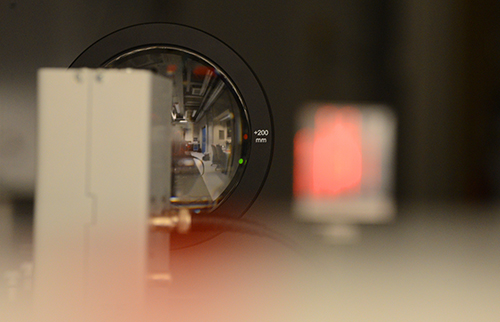
The speed of light
Nothing in the universe is faster — In a single second, light can travel from the earth to the moon. Even to travel the huge distance from the sun to the earth, light needs less than 9 minutes – that’s for 150 million kilometers. Since light is very fast, but nonetheless has a limited speed, you can use it to rapidly measure positions. This is because at different distances, tiny time differences arise on light’s journey to various destinations. This we use not only for GPS, but also at our student lab!
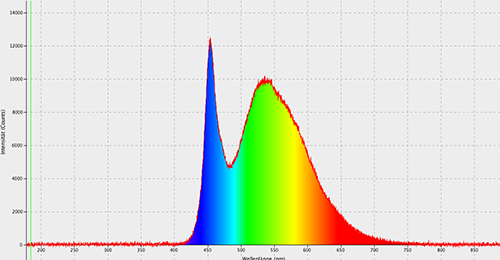
Spectral analysis
The colors of the rainbow — Our eyes can distinguish between different colors perfectly. But when several colors are overlaid in one spot, we can only see a mixed color. The sun, for example, emits a rainbow of colors, yet we see only white light. Using a spectrometer in the lab, we can reveal which colors are actually emitted from different sources.
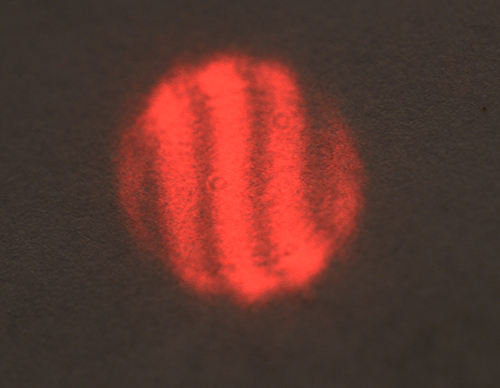
Interferometer
Light + light = dark? — It’s surprising to see that when you fire two laser beams at the same point, it’s not twice as bright, but in fact, dark! With an interferometer, we can get on the trail of light waves – and even measure their size!

Optical tweezer
Catching polystyrene beads with a laser — Normal tweezers are too large to precisely position microscopic objects measuring just a few micrometres. Instead, optical tweezers are used: with the aid of a laser, tiny objects such as polystyrene beads can be captured and moved with precision. This technology is used, for example, in artificial insemination and in the positioning of individual atoms.

Ruby laser
The first laser in history — Lasers are known as highly precise and powerful light sources. Lasers are used in a wide range of areas, from surgery to hair removal. Lasers have also become indispensable in research. The first laser was constructed in 1960 by Theodore Mayman using a ruby as the laser medium. In this experiment, you will follow in the footsteps of the first laser and find out how precisely the mirrors must be adjusted to generate laser light.

Double slit
A first glance at quantum physics — If you shine a laser onto a double slit, you get not just two bright stripes behind the two slits, but many more. This phenomenon can be explained by the wave nature of light and interference. Individual quanta, such as photons or electrons, behave in exactly the same way: here too, interference ensures that individual photons, for example, cannot only be measured directly behind the two slits. The photons appear to pass through both slits at the same time and then interfere with themselves!

Bomb tester
Identifying sharp bombs — Let's assume we have bombs that explode as soon as a photon hits the trigger. How can we find out which bombs are live and which are duds? With the quantum mechanical phenomenon of non-interactive measurement, this is possible without detonating live bombs!

Quantum eraser
Even quantum information can be erased! — An interference pattern arises when we cannot tell which path the photon took to reach the screen. We can try to obtain the path information by marking the paths with polarisation filters. However, this causes the interference to disappear! To restore it, the information must be "erased" again. This undoes the marking of the paths.
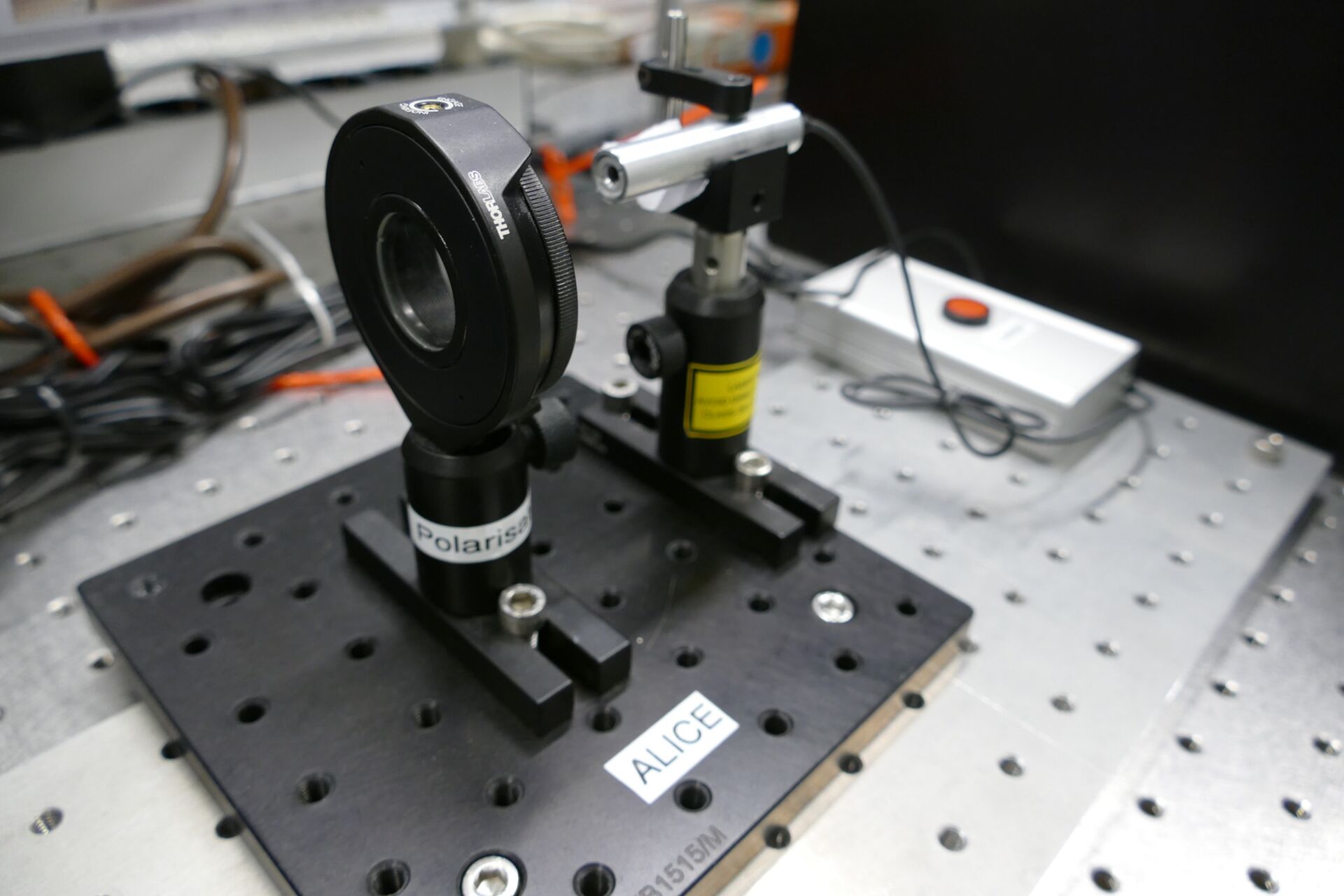
Quantum cryptography
Encrypting your own messages! — Random digital keys are needed to encrypt messages in a tap-proof manner. These keys should only be known to the sender and the recipient - and preferably should not be able to be intercepted. In the student lab, you can try out how this works and send your own message. An interactive simulation on quantum cryptography can be accessed here.
"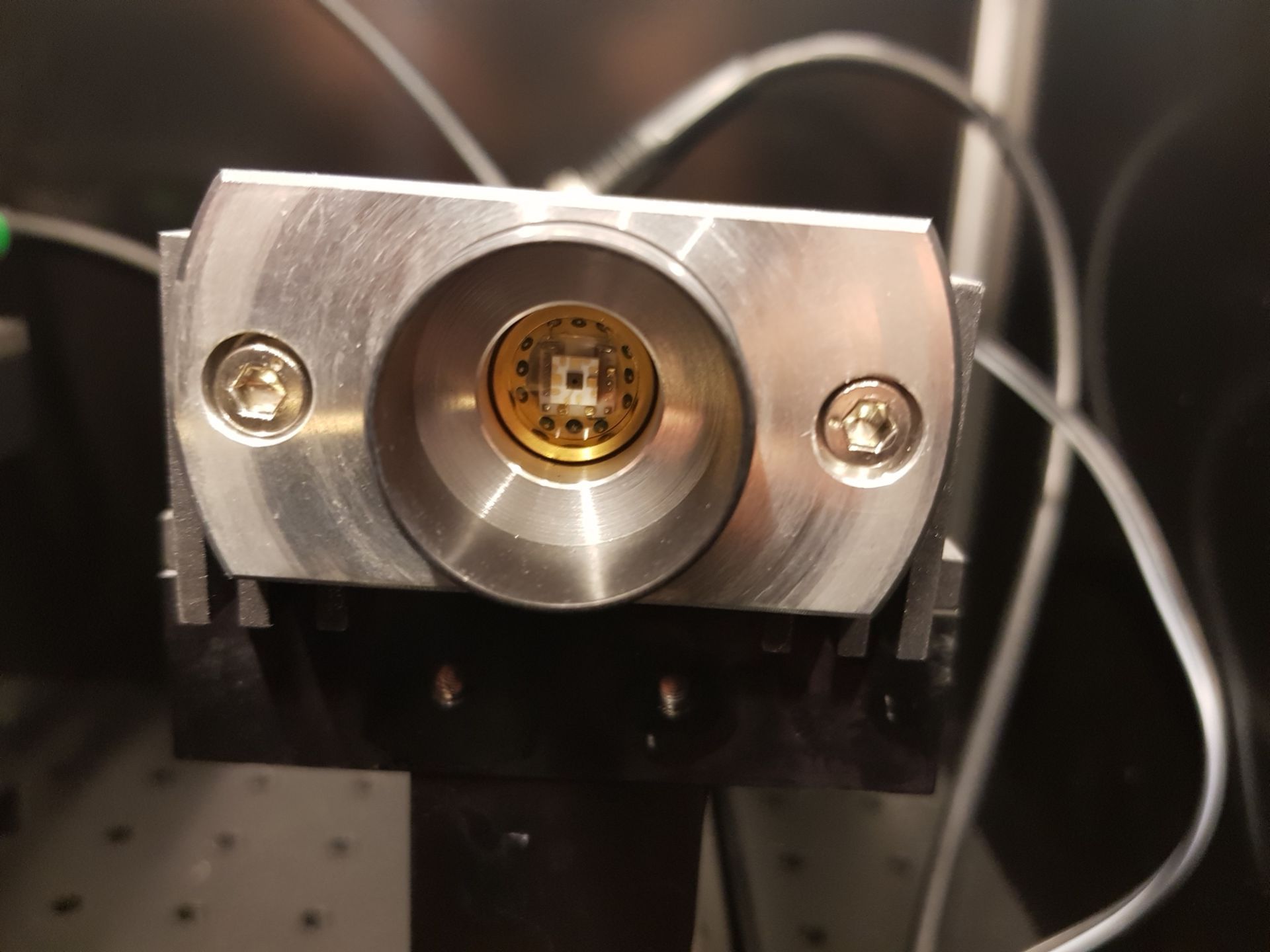
Quantum Random
Generate real random numbers yourself. — This is possible with our quantum random number generator! Most random numbers used in encryption are calculated "pseudo-random numbers" and therefore not really random. However, with the help of quantum physics and single photons, real random numbers can be generated and checked for their randomness.










